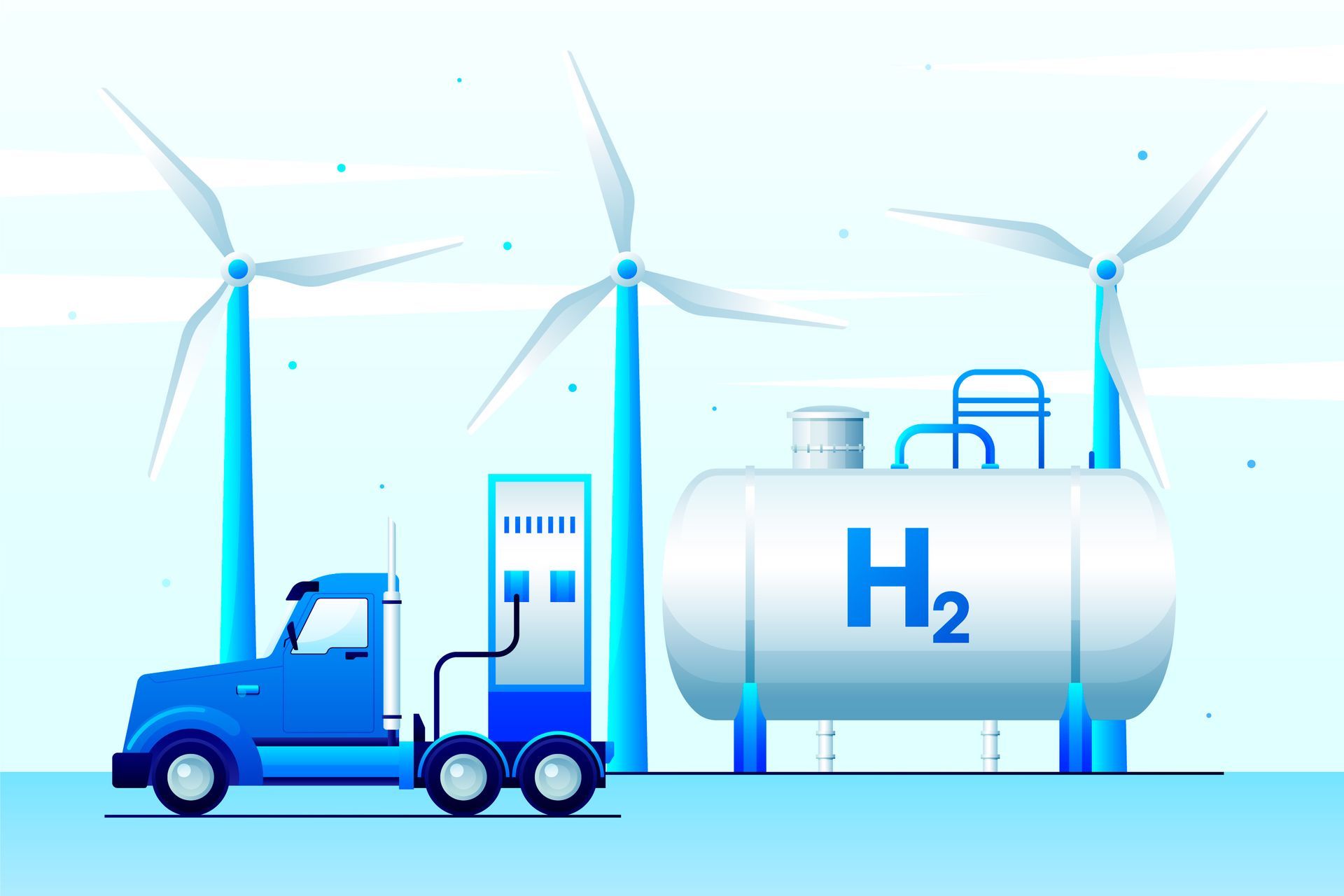The Gross Science Explaining Why You Should Take Your Shoes off
While Indoors
Author: Emily Newton
Although wearing shoes inside is common in the United Kingdom, there are plenty of good reasons to rethink the habit.
Germs
You probably already remove your shoes if you step in something extra nasty or smelly, but did you know that simply walking on the pavement can expose you to contaminants?
A 2022 study found 17.8% of health care workers
in a Swiss tertiary care centre had Clostridioides difficile — a bacterium that causes life-threatening diarrhoea — on the soles of their shoes. If you work in health care or frequently visit the doctor, there’s a good chance your shoes are contaminated with bacteria you don’t want to bring home.
You might inadvertently be tracking in Staphylococcus aureus, the culprit behind many cases of skin infections, meningitis, endocarditis and more. The soles of your shoes can also carry Escherichia coli, and some strains of this bacterium can cause intestinal and urinary tract infections. The E. coli O157:H7/STEC strain multiplies rapidly at temperatures above 4.4° Celsius
and can cause dangerous food poisoning.
Other shoe- and floor-associated microbes scientists have catalogued include species from the Paracoccus, Rubellimicrobium, Janthinobacterium, Hymenobacter and Rhodobacter genera — and that’s not even a complete list. Your shoes are crawling with germs.
Some of the bacteria on your shoes may be drug resistant, meaning they’re much harder to kill. Antimicrobial-resistant microbes have evolved mechanisms to protect them against substances like disinfectants and antiseptics. That means antibiotics likely won't be as effective if you get an infection from them.
It’s even more important to take your shoes off indoors if you have carpet because it can hold more dust and bacteria than solid floors due to its greater surface area. You should hoover and steam clean your carpet frequently to minimise the risk of bacteria
lingering in the fibres.
Harmful Chemicals
If you like to walk in fields, parks, golf courses or gardens, you’re probably stepping in pesticides. The World Health Organisation estimates 385 million cases of pesticide poisoning
occur annually worldwide, with around 11,000 deaths as a result.
Toxicity depends on how much you’re exposed to, which type of pesticide it is and whether you have any underlying health problems. Pesticides can cause nose and throat irritation, dizziness, nausea, asthma, reproductive problems and even cancer.
Wearing shoes in the house could also contaminate your home with per- and polyfluoroalkyl substances (PFAS), also known as forever chemicals due to their propensity for persisting in the environment. One study found 26 different types of PFAS
in a single street-sweeping sample.
These chemicals are tentatively linked to increased cholesterol levels, changes in liver enzymes, lower baby birth weights, an increased risk of kidney or testicular cancer, decreased vaccine responses in children and an increased risk of high blood pressure in pregnant women. Scientists are still gathering data to determine the full range of health effects.
Asphalt is another substance you might accidentally bring home with you. Fresh asphalt gives off airborne contaminants including particulate matter, oil mist and polycyclic aromatic hydrocarbons. Scientists have linked exposure to new asphalt with irritated eyes and airways, lung and bladder cancer, heart disease and reduced lung function.
Allergens
If anyone in your home reacts to pollen, mould, dust or other outdoor allergens, not wearing shoes in the house could help minimise their symptoms. Wipe your shoes as thoroughly as you can on a doormat before entering. Then, leave them at the door to avoid tracking these harmful substances into your home.
Keeping Children and Pets Safe
It’s imperative to avoid wearing outdoor shoes in the house if you have animals or young children. Because they tend to spend so much time on the floor, they could directly ingest bacteria or chemicals. Puppies are especially prone to licking and biting objects.
Your shoes may even have traces of lead on them if you live in an area with lead-contaminated soil. If you live in an older home, there may be layers of lead paint and lead-containing plaster in the surrounding area.
This toxic metal can contribute to learning and behaviour problems such as reduced IQ, hyperactivity and stunted growth in kids. It also causes serious health problems in children and animals. That’s why it’s crucial to clean your floors frequently and not wear outside shoes in the house.
Are Indoor Shoes OK?
Although it’s best not to wear outdoor shoes inside, it’s completely fine if you have a pair of beloved slippers or shoes you wear solely in the house. It’s not the act of wearing shoes that exposes you to contaminants, but rather that footwear is a vector for moving germs from one place to another. You’d pick up the same germs from strolling barefoot outdoors and then walking back into the house.
In fact, wearing indoor slippers can be helpful for people with particular foot problems. The proper footwear can provide arch support, cushion your feet against the hard floor and keep you warmer in the winter. Just make it a rule to wear your slippers only in the house.
Wearing Shoes in the House Could Be Harmful
Ultimately, it’s your choice whether or not to wear shoes indoors, but it’s probably more beneficial to take them off if you live in a busy urban area and spend a lot of time in public spaces. It could also protect your family from accidentally eating something harmful from the floor. Regardless of your house rules, it’s always a good idea to clean frequently to minimise your exposure to contaminants.
More articles!

By EuroScientist Editor
•
07 Sep, 2023
Hydrogen fuel can be made from wood waste in a clean and cost-efficient way at heat and power plants – and its developers hope it could change the narrative around this sometimes-controversial solution. By Steve Gillman & Fintan Burke The costs of scaling up hydrogen power, along with the potential amount of energy and natural resources to produce it, have seen this fuel source face increased scrutiny as a solution against climate change. “The majority of our electricity and hydrogen is produced from fossil fuels. This, of course, is not sustainable as it contributes to climate change,” said Michael Bartlett, a founder of Phoenix Biopower, a company that turns natural waste into combustible gas, like hydrogen. As part of a research project called Bio-FlexGen, Bartlett is developing ‘green hydrogen’ from biomass waste from the forestry sector. “Our ultimate goal is to provide a secure, renewable and low-cost energy for society and industry,” he adds. Bio-FlexGen, and its multidisciplinary team of 14 partners from five EU countries, aim to provide the technology for combined heat and power plants (CHP) that can also generate a supply of green hydrogen in addition to usual outputs of electricity and heat. To make green hydrogen, Bio-FlexGen will use a combination of two main technologies – a gas turbine and a gasifier. First, waste biomass is added in a gasifier at pressure and heated up to 850 Celsius – a temperature so hot that it releases other gases, mainly hydrogen, methane, and carbon monoxide. The next step sees water and steam added to cool before it passes through a cleaning filter. “Once we have cleaned up the gases from the gasifier, we can either send it to the gas turbine for combustion and electricity generation or to a hydrogen production unit,” said Bartlett, adding that this process gives “enormous power” and efficiency to the CHP plant. The high temperatures of this process, over 1400 Celsius in the gas turbine combustor, also result in greater power generation. To ensure a high efficiency, the system is designed to gather waste heat and recycle it back into the gas turbine in the form of hot steam. This, Bartlett says, can result in double the electricity output that is typical for a given amount of biomass. The new approach means the CHP plant then has three modes of operation; 1/ produce heat and electricity efficiently from biomass in the winter 2/, produce green hydrogen and biogenic CO2 from biomass in the summer 3/ utilise hydrogen in the gas turbine for peak power. This flexibility means it can help keep costs low and stable and complements the hourly, weekly and seasonal variability of solar and wind power. Converting critics and pushing EU hydrogen plans ahead Bio-FlexGen’s systematic approach to incorporating green hydrogen could go a long way in negating the main arguments against this renewable energy, primarily the amount of natural resources it requires for its production. According to Rystad Energy, 620 million cubic meters of water are needed to produce 85% of the green hydrogen capacity planned for 2040. However, environmental groups like Greenpeace argue that renewable power alone is not enough to produce the needed amount of green hydrogen. If anything, they claim this may end up increasing fossil fuel demand. But Bio-FlexGen’s green hydrogen production utilises oxygen to drive the gasification process, itself a by-product of green hydrogen production from wind and solar power. “The main advantage of getting hydrogen from biomass compared to wind or solar is that it has less variability and is not dependent on electricity price,” said Bartlett. “It also requires less H2 storage (you store biomass instead) for when the wind doesn't blow.” When producing electricity from biomass in the CHP plant, a lot of steam is needed in the gas turbine for the best effect. In fact, 50% of the exhaust is just water vapour. This water is recovered, treated and recycled back to this process, and an excess of clean water can even be produced for other consumers. When this water is recovered, it also generates large amounts of heat, which the project can use further in district heating networks or other processes. In this way all the energy in the biomass is efficiently used. “We are working very hard to ensure that we are part of a circular biomass utilisation and that we are using hydrogen in the safest possible way,” explains Bartlett, adding that the project will make a “significant contribution to the decarbonisation of the energy system”. The first commercial plant using Bio-FlexGen’s approach is planned for 2030, in which the power plant will operate on biomass in the winter months and use 100% green hydrogen in the summer months, therefore displacing demand for fossil fuels in peak periods – a goal increasingly shared by EU policymakers. Following the war in Ukraine, and the embargo on Russian oil imports into the EU, the European Commission outlined a ‘Hydrogen Accelerator' concept to scale up renewable hydrogen deployment. This ‘REPowerEU Plan’ wants the EU to produce 10 million tonnes of renewable hydrogen by 2030, with the Commission recently proposing criteria that Member States can follow to ensure they produce green hydrogen, including that it only be produced when and where sufficient renewable energy is available. As BioFlexGen’s power plant will operate with up to 100% green hydrogen from solar and wind, with an optimised combination of bioenergy, it is already on course to meet these criteria. Bartlett also believes that the project has brought together “amazing, competent people” that can play a key role in developing green hydrogen further.

By EuroScientist Editor
•
07 Sep, 2023
Author: Jane Marsh Scientists are researching a theory known as positive climate tipping points. While most people talking about tipping points concentrate on their negative consequences, such as irreparable harm to ecosystems, positive tipping points provide a ray of hope. These points may result in favorable and constructive changes to our planet's climate system as the effects of climate change continue. Learn more about the idea of positive climate tipping points, consider their possible advantages and discuss their significance in understanding and tackling the problems caused by climate change. Understanding Tipping Points To fully understand positive climate tipping points, it is essential first to understand what tipping points are. Tipping points are key thresholds in a complex system where a minor change can cause significant and sometimes irreversible changes in the system's behavior. Harmful climate change tipping points may be the first type that comes to mind. These relate to occurrences like the melting of significant ice sheets or the disruption of essential ocean currents, which can have quick and harmful repercussions. However, there are also positive tipping points that may shape the future climate. Positive Climate Tipping Points Unlike negative climate tipping points, positive ones can increase ecosystem resilience and bring about encouraging changes. These turning points take place when certain environmental activities or changes trigger self-reinforcing mechanisms that improve the earth's capacity to absorb carbon dioxide, lower greenhouse gas emissions or support the preservation of vital habitats. Forest preservation and restoration is one illustration of a favorable climate tipping point. As forests grow and recover, they sequester a greater amount of carbon dioxide, which lowers the levels of greenhouse gases in the atmosphere. This process creates a positive feedback loop that encourages greater forest development and improves the ability of these ecosystems to control the temperature. Relevance and Implications of Positive Tipping Points Positive climatic tipping points must be recognized and utilized for mitigation and adaptation initiatives to succeed. Scientists and decision-makers can create targeted interventions to improve the planet's resilience and lessen the effects of climate change by identifying and utilizing these tipping points. Climate tipping points can also encourage and inspire group action. They provide concrete instances of how individual and group activities, such as reforestation programs, sustainable land management techniques and ecosystem restoration projects, can significantly contribute to the fight against climate change. The general public may take inspiration in carrying out sustainable behaviors or supporting laws that help effect positive change. Emphasizing these positive tipping points' potential advantages and ripple effects encourages individuals at all levels. While positive climate tipping points have great potential, it is important to recognize that our understanding of them is still developing. Further research is necessary. These tipping points require identification, monitoring and measurement, which demands continual study and scientific cooperation. Scientists use advanced modeling approaches and thorough data analysis to find potential positive tipping points across different ecosystems. Researchers are also looking into how positive and negative tipping points are connected. Scientists can create comprehensive plans to negotiate the intricacies of climate change and maximize beneficial results by thoroughly comprehending the relationships between these tipping points. Positive Climate Tipping Points Could Be a Game-Changer Positive climate tipping points demonstrate optimism in the fight against climate change. If people locate and utilize these tipping points, we may be able to develop self-reinforcing mechanisms that positively affect our planet's climate system. Scientists, decision-makers and people can take proactive measures in climate change prevention and adaptation by comprehending the significance of positive tipping points and their potential ramifications. The complexity of positive climate tipping points must be further understood through ongoing research and monitoring projects to successfully navigate the challenges of climate change and create a more resilient and sustainable future.

By EuroScientist Editor
•
18 Jul, 2023
It’s no secret that the planet is getting warmer, but July 2023 saw record-high temperatures that really turned heads. 2023 is an El Niño year — in addition to human-caused climate change, the Earth is undergoing an expected cycle of exceptionally warm weather that occurs every few years.
This double whammy has many people reaching for their water bottles and cranking up the AC. Why are scientists so worried about the heat?

By EuroScientist Editor
•
03 Jul, 2023
Hydrogen fuel cells have garnered a lot of attention recently. As the global conversation shifts to emissions-free energy, many people want to know how fuel cells work, whether they could replace internal combustion engines someday and if they can power homes. Here are answers to common questions about the technology.



